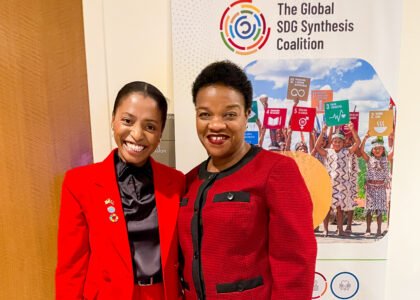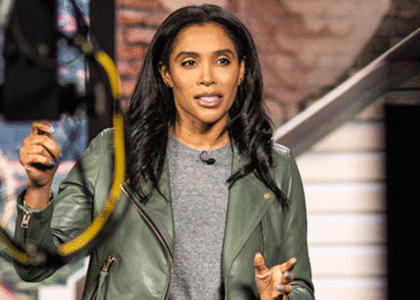We were two halves of a powerful whole, working to create a life together — but also, separately, striving to become our fullest, most vibrant selves.
—Michelle Obama
44th First Lady of the United States in her debut book: Becoming
I grew up with a father who never saw limitations in his daughters. A girl dad in the truest sense, he expected nothing short of excellence from his daughters. Not because we were girls who needed to “prove” ourselves, but because in his world, we were simply supposed to be the best.
In our household, there was no conversation about what girls could or couldn’t do – just an unshaken expectation that we would lead, that we would take up space, and that we would excel.
My Mother’s ‘Ideal’ Love
My mother was a force. A woman so fiery and determined that she became Africa’s first female inland marine captain, shattering barriers before I even understood that they existed. But even as she navigated spaces not built for her, she was never alone. My father was the kind of husband that society would deem “good” – a provider, a steady presence, a man who fulfilled every role expected of him. And yet, for all his goodness, my mother was not always fulfilled.
For the longest time, I did not understand why.
I never saw my gender as a limitation because I was raised in a home where it wasn’t one. The construct of gender – the idea that women should expect less, aspire for less, or shrink themselves – was foreign to me. I moved through the world believing that I belonged at the top, that my success was natural, and that my mother’s triumphs were simply the way things should be. It wasn’t until I stepped outside my home, outside of my carefully built reality, that I started to see the world for what it was.
People weren’t just impressed by my mother’s achievements; they were shocked. They weren’t just applauding my ability to lead; they were surprised. And slowly, I started to see the invisible rules women were expected to play by. I began to understand why my mother – despite having a husband who checked all the right boxes – still carried sacrifices she hadn’t fully made peace with.
And so, I ask: What does the future of partnership look like for women?
Now, as I finish writing this book, I am turning 30. Throughout my late twenties, the questions about when I am going to get married and partner up have become louder. These are questions I’ve noticed my male counterparts rarely receive in the same way.
For the better part of my life, my focus has been my career – as has been the case for many of my peers, both men and women. Yet, as we near 30, the conversation around partnership has started to shift. Not just for me, but for my male counterparts as well. The difference is in the conditioning: men are often encouraged to build themselves first and then seek a partner, while women are socialized to believe that finding a partner must be central – almost foundational – to their lives.
This imbalance needs to change. Women should have the same freedom to focus on themselves first, to grow, to build, to explore, and to decide when and if partnership fits into their vision of fulfillment. There should not be a societal timeline dictating when a woman must make space for love, nor should partnership be seen as the defining feature of a woman’s life while being just another aspect of a man’s.
In her final years, my mother told my sister and I, “Even if you don’t get married, have and raise your babies.” She spoke of motherhood as the greatest joy of her life, yet I know that partnership, too, was deeply important to her. But what if the model of partnership she had, the moment that is often celebrated as the ‘optimal’, was not enough? What if society’s very definition of what it means to be a “good husband” failed to account for a woman’s full fulfillment?
Now, as I stand at the crossroads of my own future—navigating career, ambition, love, and legacy – I find myself questioning what true partnership looks like. Not just for me, but for the generations of women who will come after us – for my niece, and perhaps my future children.
This book is a conversation. A deep dive into what it means to walk on glass shells – navigating the professional and personal expectations that come with womanhood. We will explore the glass ceiling that tells women their ambition must have limits, and the glass cliff that makes them fight twice as hard only to be handed impossible battles. We will dissect gender theories, power structures, and the unspoken sacrifices women are still expected to make. But most importantly, we will ask: What comes next?
What does a partnership that truly fulfills women look like? What does a world where women don’t just succeed, but thrive – without compromise – look like?
This book is my attempt to answer those questions, and a call to conversation with you about dynamics that affect us all. The first chapter is my story: my why – why this book. The chapters after are about and for you – what we are going to do with you (or the woman in your life): an empowered woman.





